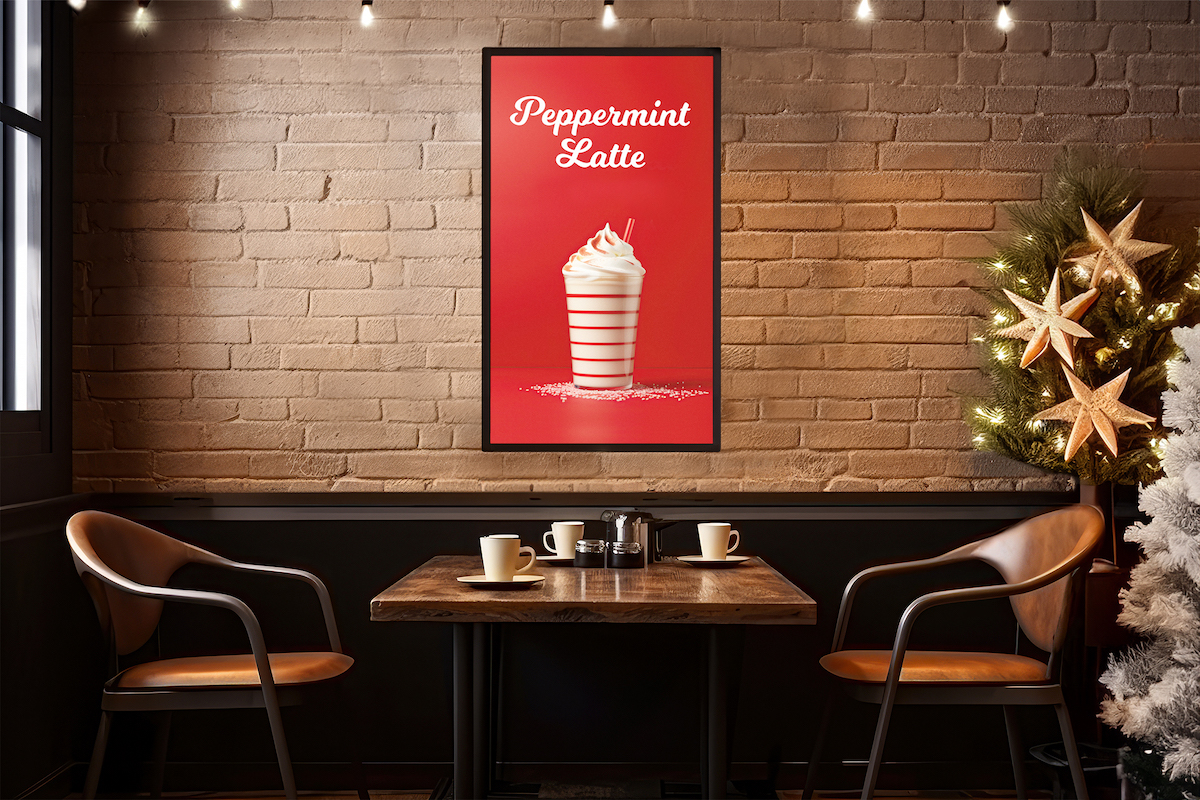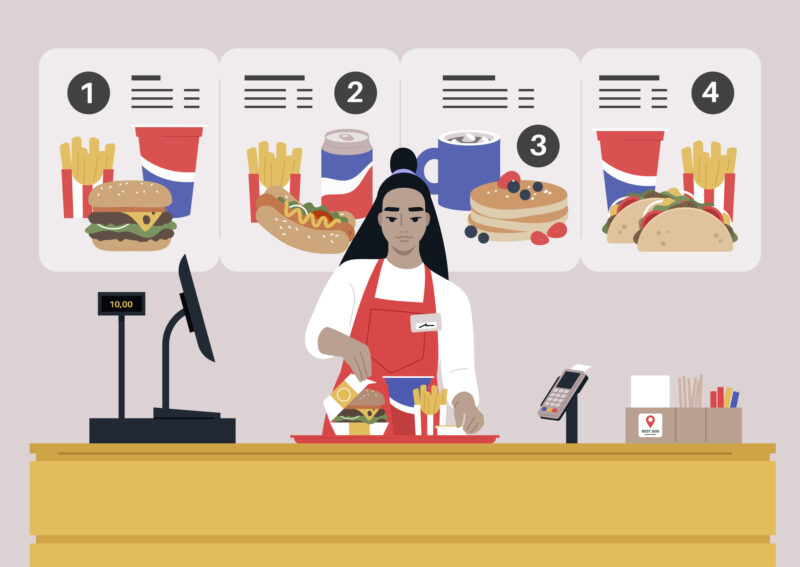
Staying On Top Of Seasonal Promotions And Messaging Gets Easier, More Accurate, Using Digital Signage
December 14, 2023 by guest author, Emily McCue Baldeschwiler
Guest Post: Emily McCue Baldeschwiler, Spectrio
 There is a lot more to seasonality in retailing and food services than spring, summer, fall and winter, and digital signage technology offers a way for operators to not only stay on top of all the changes seasonality requires, but also profit from them.
There is a lot more to seasonality in retailing and food services than spring, summer, fall and winter, and digital signage technology offers a way for operators to not only stay on top of all the changes seasonality requires, but also profit from them.
Consumers are familiar with products and décor tied to annual celebrations and seasonal rites of passage like Christmas and Back To School, but there can be many more seasons in play, such as:
- Cough and cold season for medications sold in chain drug stores;
- Winterizing services at auto service counters;
- Food and drinks for the return of football tail-gating;
- And, of course, pumpkin spice season in Quick Service Restaurant (QSR) chains.
Let’s sip on that last one – the annual fall binge of pumpkin spice-flavored drinks and snacks. Coffee chain Starbucks was the first major QSR operator to market pumpkin spice drinks, with those limited time offer products driving up same-store sales in the U.S. by an average of eight per cent.
The popularity and bottom line impacts seen by Starbucks have inspired other operators to come up with their own seasonal offers, hoping to also see that kind of sales growth. After pumpkin spice comes peppermint, of course!
Industry data certainly suggests consumers respond favorably to seasonal offers. The publication Restaurant Business reports:
- 45% of consumers are more likely to try an item if it has seasonal ingredients;
- 35% are more likely to try a new flavor or item if it’s only on the menu for a limited time.
Nimble And Compliant
While seasonality is common across retail and food service businesses, changing promotions, pricing and other details regularly present three big challenges to operators:
- Staying timely;
- Being accurate;
- Finding the resources and free time to make the physical changes.

Many of the top QSR operators have gradually converted their corporate and franchise-run stores from printed menus to digital screens – primarily to juggle dining options that change through a day (like breakfasts that aren’t available after, say, 11 am).
But going digital has also enabled operators to do things like adjust item pricing based on variables like demand and inventory levels. With digital, for example, items that are low or out of stock can be automatically “disappeared” off a menu, while perishable items can be discounted and cleared out – instead of sent to waste bins once food prep shuts down.
QSR and retail operators are also concerned, especially in head office marketing and merchandising departments, with marketing compliance at the local level.
Are the marketing materials designed for a specific time window in place as stipulated? Did they come down when the seasonal promotion ended? Or is the store still showing customers expired offers, and dealing with the consequences?
Minimizing Human Factors
Print signage and other materials rely heavily on human factors – like a manager being away on holiday, or simply too busy and preoccupied to make time-sensitive physical changes to menu displays and poster frames.
Sophisticated digital signage software brings control into scheduling and executing seasonal promotions, putting planning and management in the hands of a central team. Data-backed tools can precisely – to time periods, locations and specific devices – ensure the right messages are shown at the right times, and in the right places.
Messages get developed, distributed and scheduled to go up on screens and come off – adhering to marketing plans and guidelines – without any intervention by local store managers. Promotions can be scheduled weeks or months ahead of time, all from a remote desktop, connecting to deployed devices though the cloud.
While QSR operators may refresh menus on a monthly or seasonal basis, large retailers like mass merchandisers and grocers may be managing a seemingly endless number of limited time promotions and seasonal offers.
That gets compounded by offers that are regional, or the timing hinged on variables like supply chains. Then there are language differences, with retailers needing in some locations to communicate in the dominant language of customers, such as Spanish in parts of the U.S.
Coordinating all the design, printing, shipping and execution can be huge and time-consuming job, and ripe for errors. Using the right digital signage CMS, and by assigning data attributes to everything from locations in stores to specific media assets, scheduling can be relatively easy, fast and accurate.
Green Benefits
The nimble marketing that seasonal promotions demand is much more easily executed using digital signage software and infrastructure, but there are other tangible benefits – notably environmental.
Transitioning from analog printed material to digital signs removes the material and labor cost of printing, as well as shipping and more labor costs to get that material in place. But it also eliminates a lot of waste, whether the printed material developed for seasonal promotions is paper stock or some form of plastic or vinyl. Ideally that waste gets diverted to recycling, but in a lot of cases it just adds to landfills.
While digital displays consume power, their energy impacts are nominal in the context of overall operations, and they can be set to switch off during closing periods.
What’s New Wins
Sales data shows consumers are both receptive and responsive to new offers at their preferred haunts, like restaurants. Restaurant Business also reports that one of three consumers say their preferences shift by season, and that number goes up to nearly half when it comes to younger (18-34) consumers.
So seasonality is here to stay, and likely growing as a strategy. It presents an opportunity to grow bottom lines, but it can be an operating challenge if operators are still using analog tools to communicate and sell. Going digital makes it much more possible.
ABOUT THE WRITER
 Emily McCue Baldeschwiler is the Product Manager for Food and Beverage for the digital signage software and solutions firm Spectrio. She has a deep background leading innovation in the food and beverage industry, and is also a pastry chef who once owned and ran her own bakery. She’s based in Austin, TX.
Emily McCue Baldeschwiler is the Product Manager for Food and Beverage for the digital signage software and solutions firm Spectrio. She has a deep background leading innovation in the food and beverage industry, and is also a pastry chef who once owned and ran her own bakery. She’s based in Austin, TX.



Leave a comment